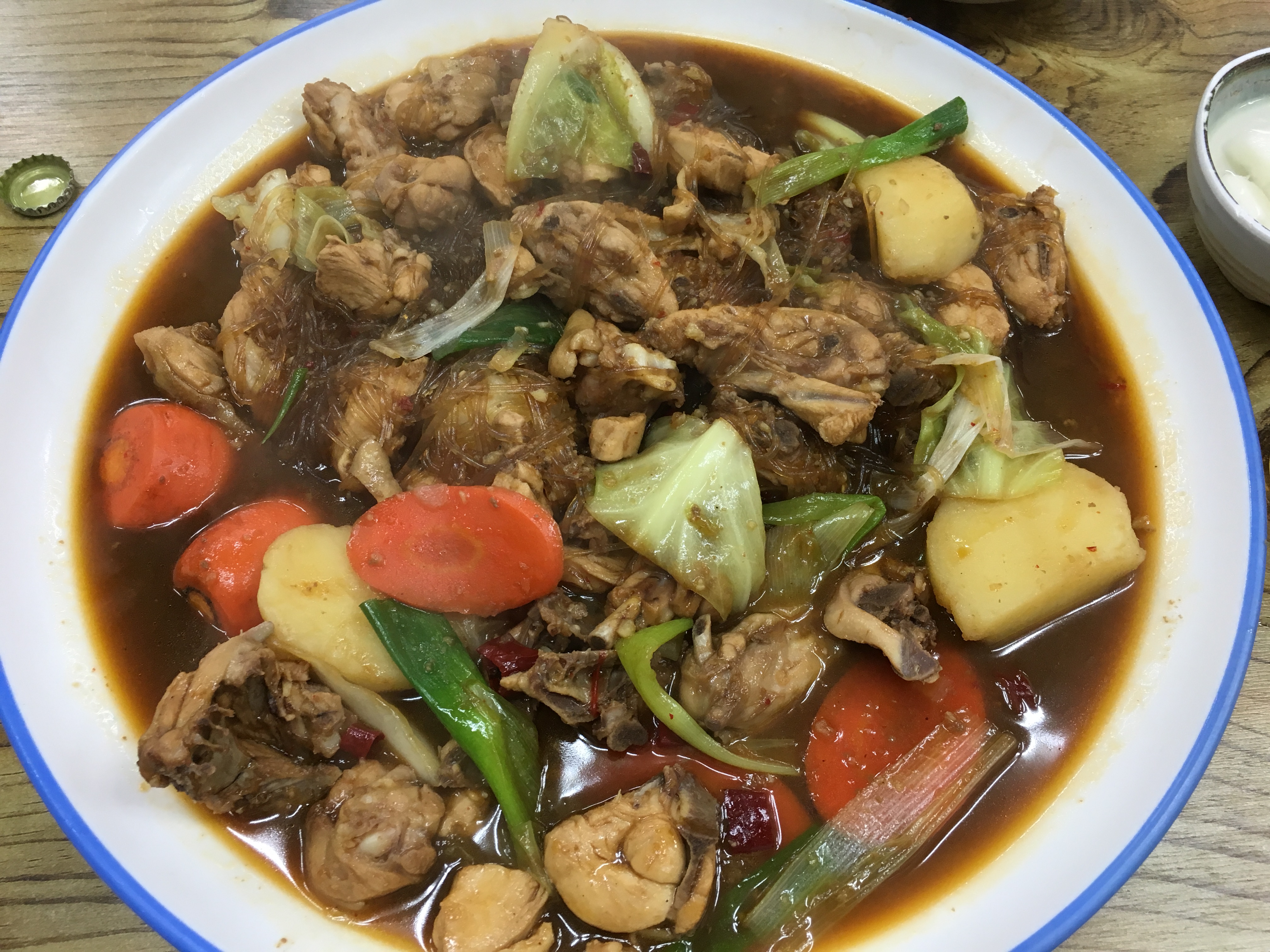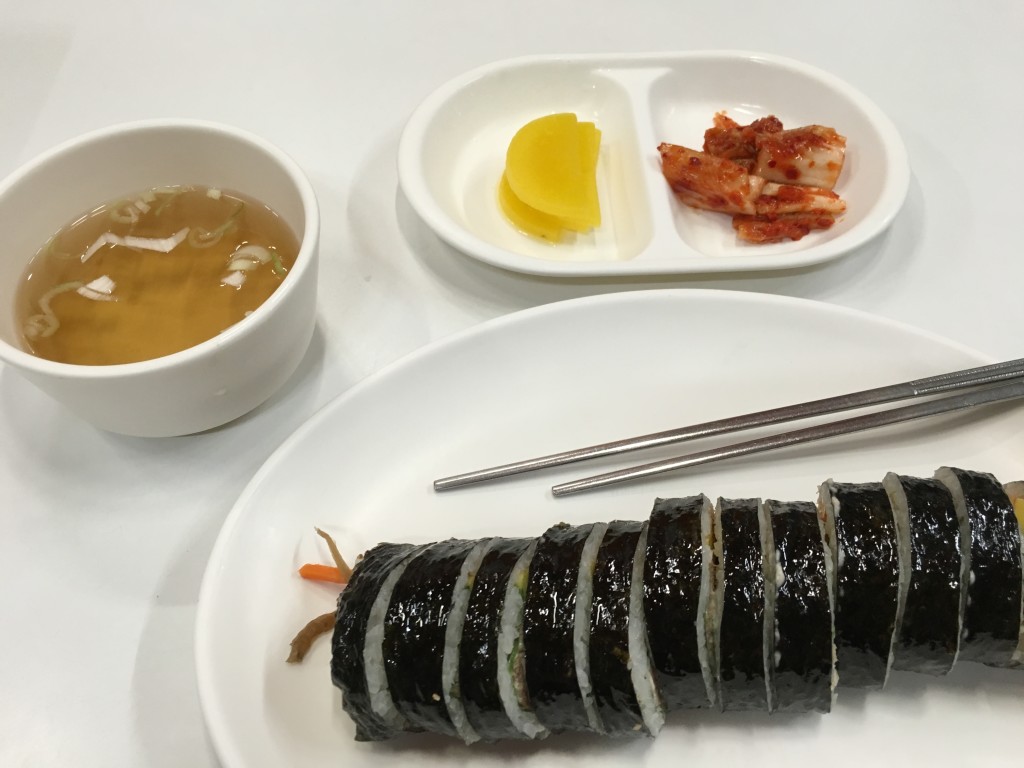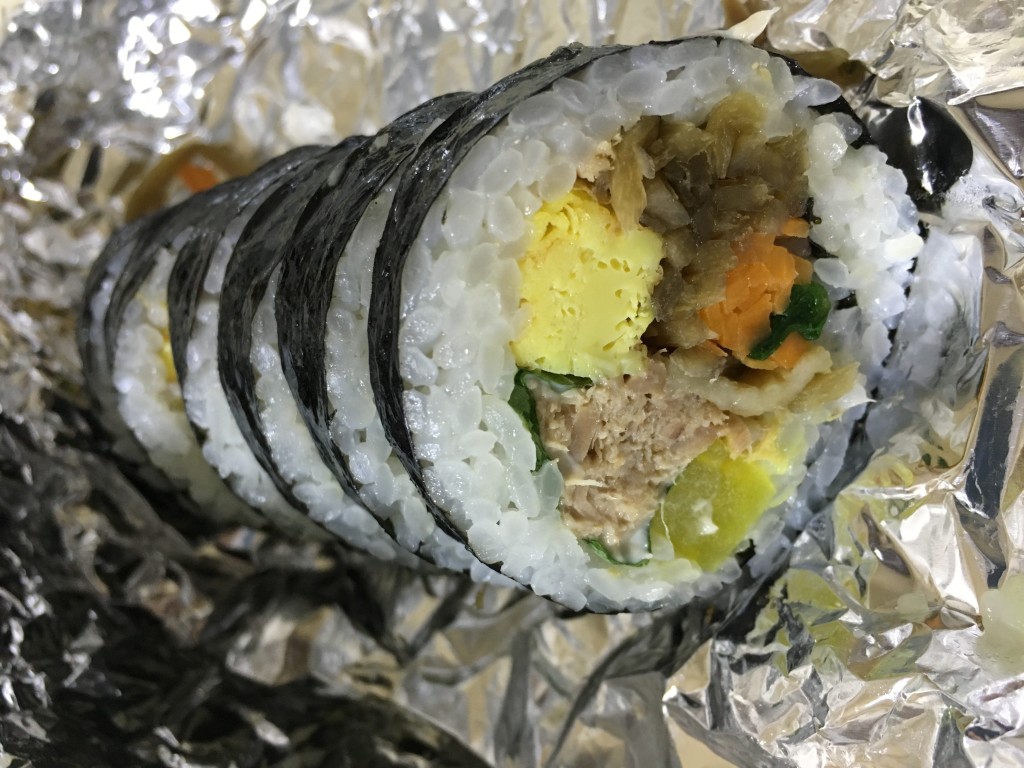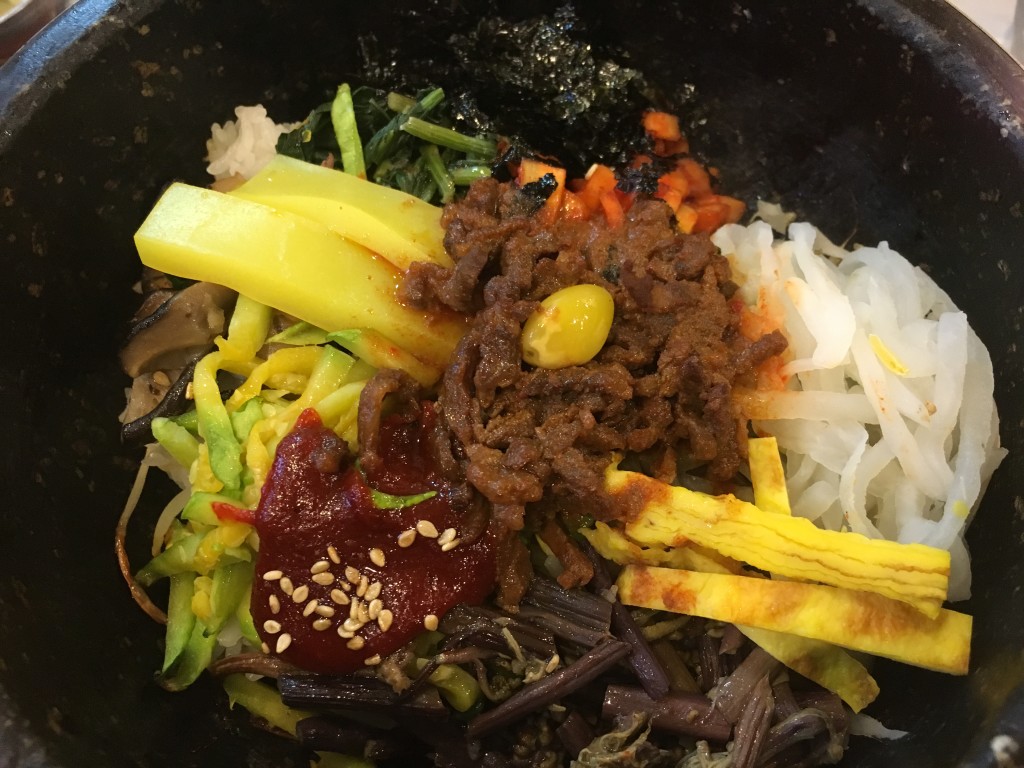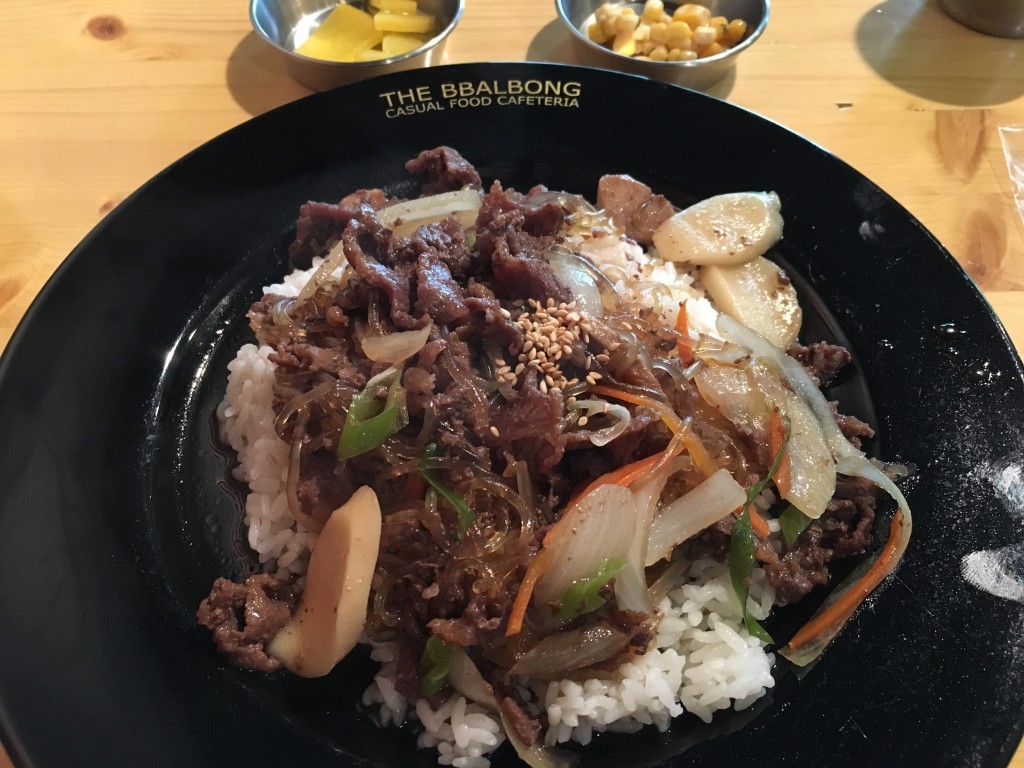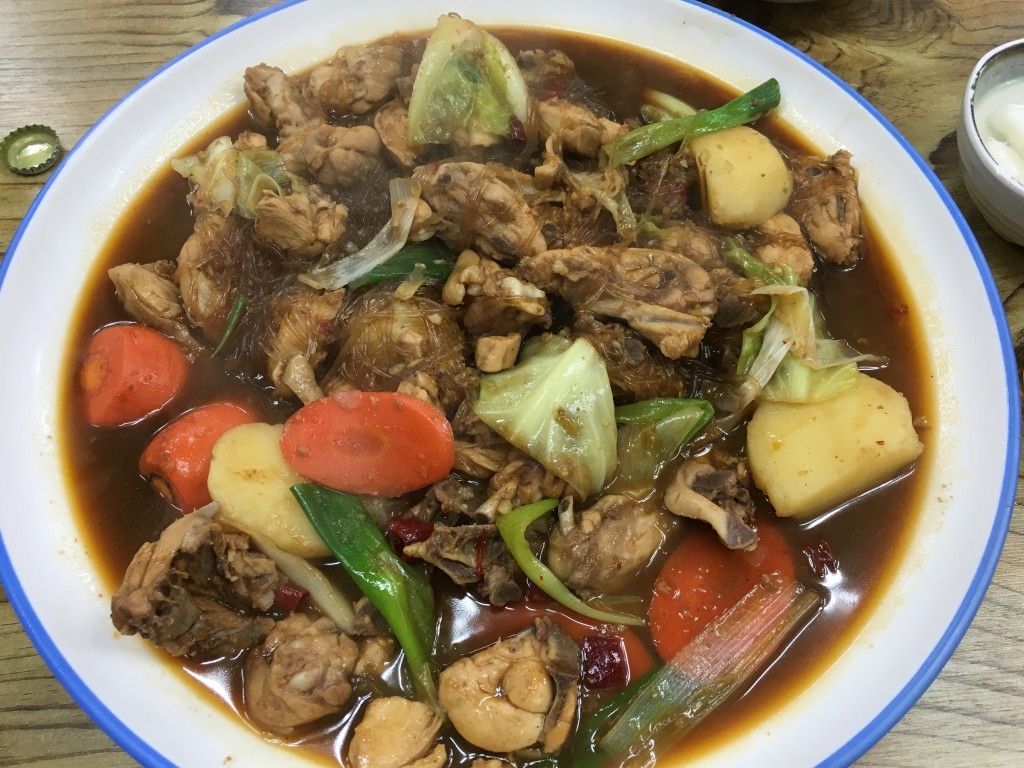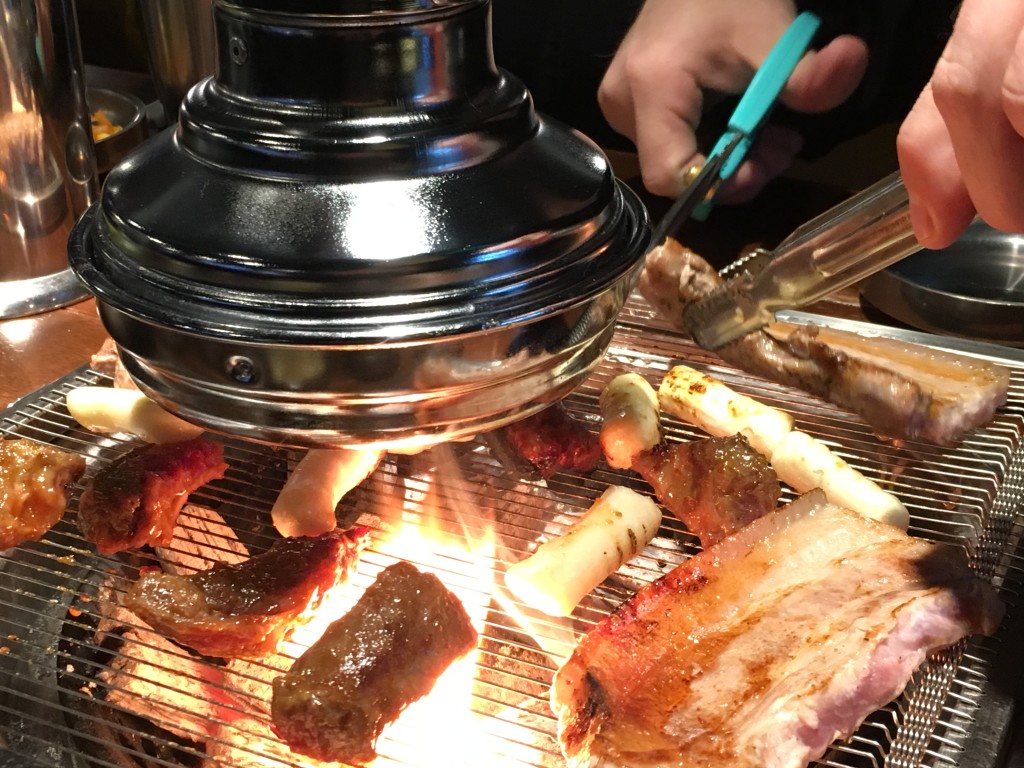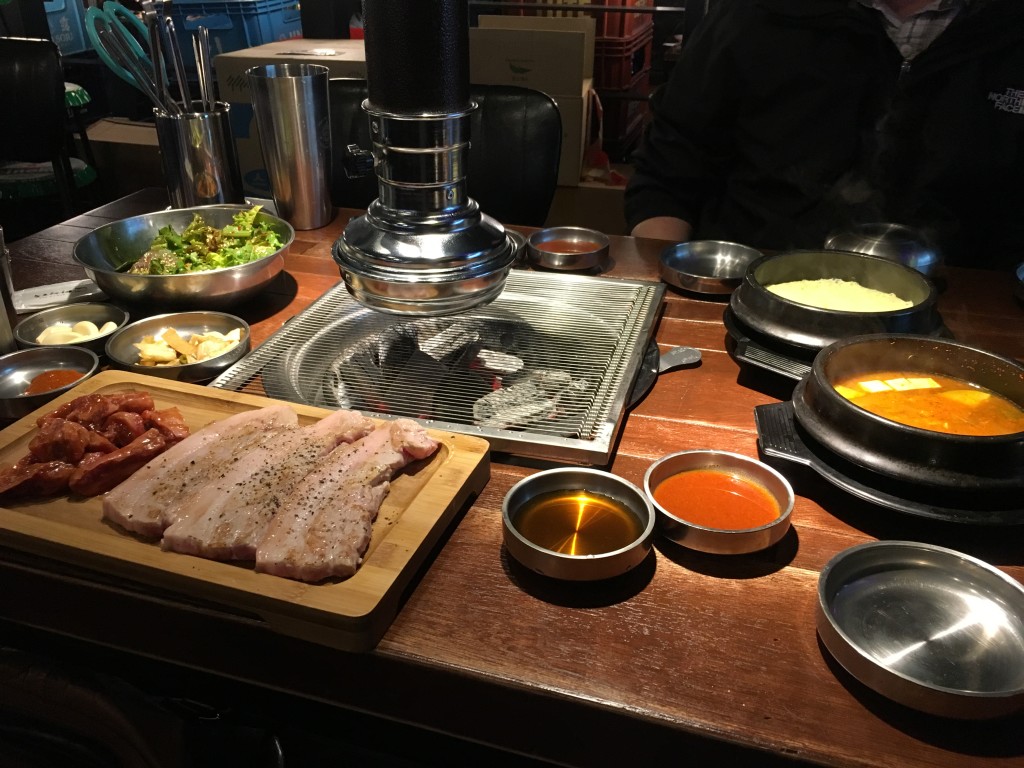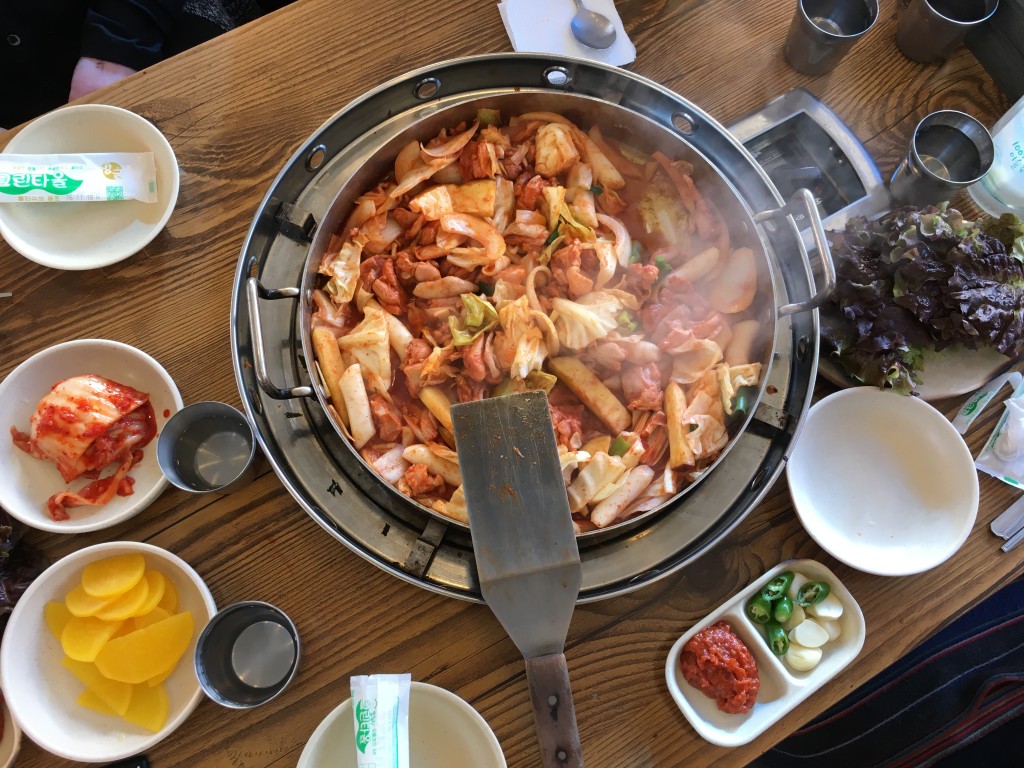Korean cuisine hasn’t hit the world stage yet, but it is growing in popularity. I’ve recently heard of restaurants popping up in Charlotte, North Carolina and London, England. My guess is that you are likely to give it a miss if you aren’t actually visiting the country, but if you do make it to Korea or indeed fancy a change from your Italian, these are the 5 dishes that have become my favourites whilst living here.
1. Gimbap
Think Japanese sushi roll without the raw fish. My favourite version is called Chamchi Gimbap, which is stuffed with canned tuna, pickled radish, shredded carrot, cooked spinach, fried egg (think a thick omelette sliced into 1cm strips), a long thin cooked deep brown mushroom, and mayo. When I work late, I often pop into the Kimpasa (a local restaurant usually run by older women) and order a chamchi gimbap which comes with a side of kimchi (a spicy pickled cabbage), pickled radishes, and a clear broth. For the ridiculous sum of 3,000won or $2.50US, it really doesn’t make sense to buy groceries and cook at home. Besides, my local ajummas (an older married woman) know me so well now and are always so happy to see me that walking into the small cafe is akin to walking into my mother’s kitchen, complete with a trashy Korean soap on the telly. Oddly this is where I often end up when I’m homesick or having a rough day.
2. Bibimbap
Best described as a bowl of rice topped with variety of vegetables and occasionally meat. You can get bibimbap at most Kimpasas and traditional cafes. If you want the most authentic version though then head to Jeonju, the region where this dish orginates from. The bibimbap pictured here is from Jeonju and was topped with carrots, dried seaweed, cooked spinach, cooked dark brown mushrooms, pickled radish, soybeans, cooked courgette (zuchinni),fried egg, minced meat, and spicy soybean paste. Really, its just a bigger version of a Gimbab unrolled.
3. Bulgogi
Done right, this is up there as my favourite Korean dish. Essentially it is mildly marinated beef mixed with glass noodles, green onions, yellow onions, mushrooms and tteokbokki. Koreans will describe teokbokki as a rice cake, but it more closely relates to the chewy consistancy of Italian gnocci only made with rice flour instead of potatoes, and usually tubular shaped. (Note: Tteokbokki is traditionally served with a spicy hot red pepper sauce. In Bulgogi, it is added without the sauce.) The Bulgogi I’ve had comes on top of rice with a little extra juice. This is a filling and gently spiced dish.
4. Jjimdak
Heaven on a plate! Well at least this particular dish pictured above was. Jjimdak is braised chicken with vegetables, but its depth of taste is so much more than that. Jjimdak is a speciality of the Andong region, and in my opinion the best place to taste this delicacy. My partner and I shared a medium sized dish and requested a medium spice. It was basically a stew of slowly cooked chicken thighs, potatoes, carrots, green onions, cabbage, glass noddles all swimming in a delicately balanced rich soy and oyster sauce that was sweetened with rice syrup and brown sugar. Sweet. Spicy. Rich. And HUGE! The two of us, who had not eaten all day, could not even finish this 18inch diameter dish.
5. Galbi (Korean BBQ)
I don’t know why, but I love interactive food experiences and Korean BBQ hits the spot. Sit down at a table with a charcoal grill in the middle. Order your preferred grams of pork and beef in a variety of cuts. And slowly watch the surface of your table disappear as the variety of side dishes and raw meat arrive ready for you to cook. I always order samgyeopsal (pork belly) and some cut of beef. The beef usually arrives in small bite sized portions that have been marinated in a slightly sweet concoction of onions, garlic, water, sugar and soy sauce. And the samgyeopsal comes as a whole cut that you use scissors to turn into manageable pieces. Side dishes include rice. A selection of lettuce leaves to wrap your meat in. Soybean paste. Onions. Garlic. A scrambled egg like dish. A spicy broth with tofu. And at my local make your own ramen noodles. This is a great weekend treat with a group of friends or someone special.
6. Dakgalbi
This has quickly become my favourite dish in Korea after trying in first in Chuncheon where it is hailed as the region’s speciality dish. This simmering concoction consists of marinated diced chicken, sliced cabbage, sweet potato, and ttekobokki (rice cake) all coated in a chili pepper paste based sauce which is stir-fried on a gas grill at your table. Half way through eating, it is essential to order a bowl of rice -which comes with seaweed and beansprouts – to add to the pot. It incorporates another dimension to the dish, and fills you up! The result is a spicy, glutinous dish that you won’t want to put your chopsticks down for until every morsel is devoured.

